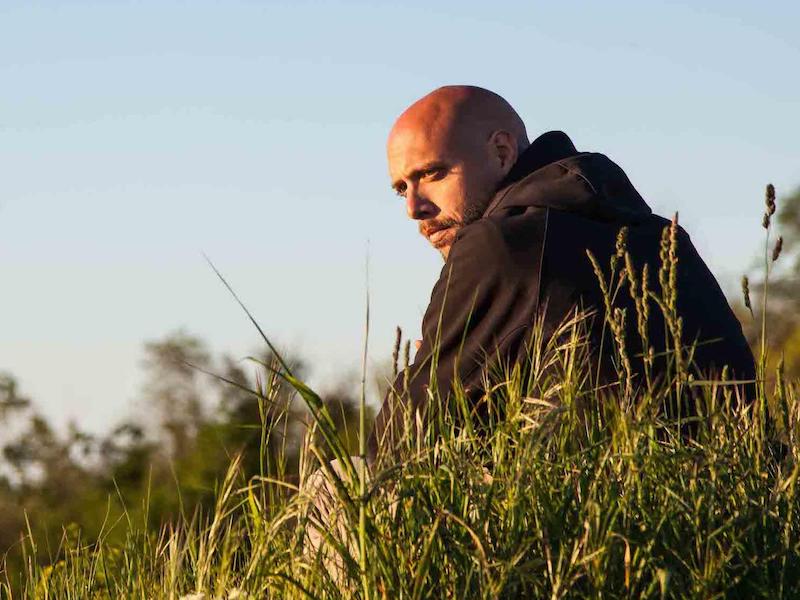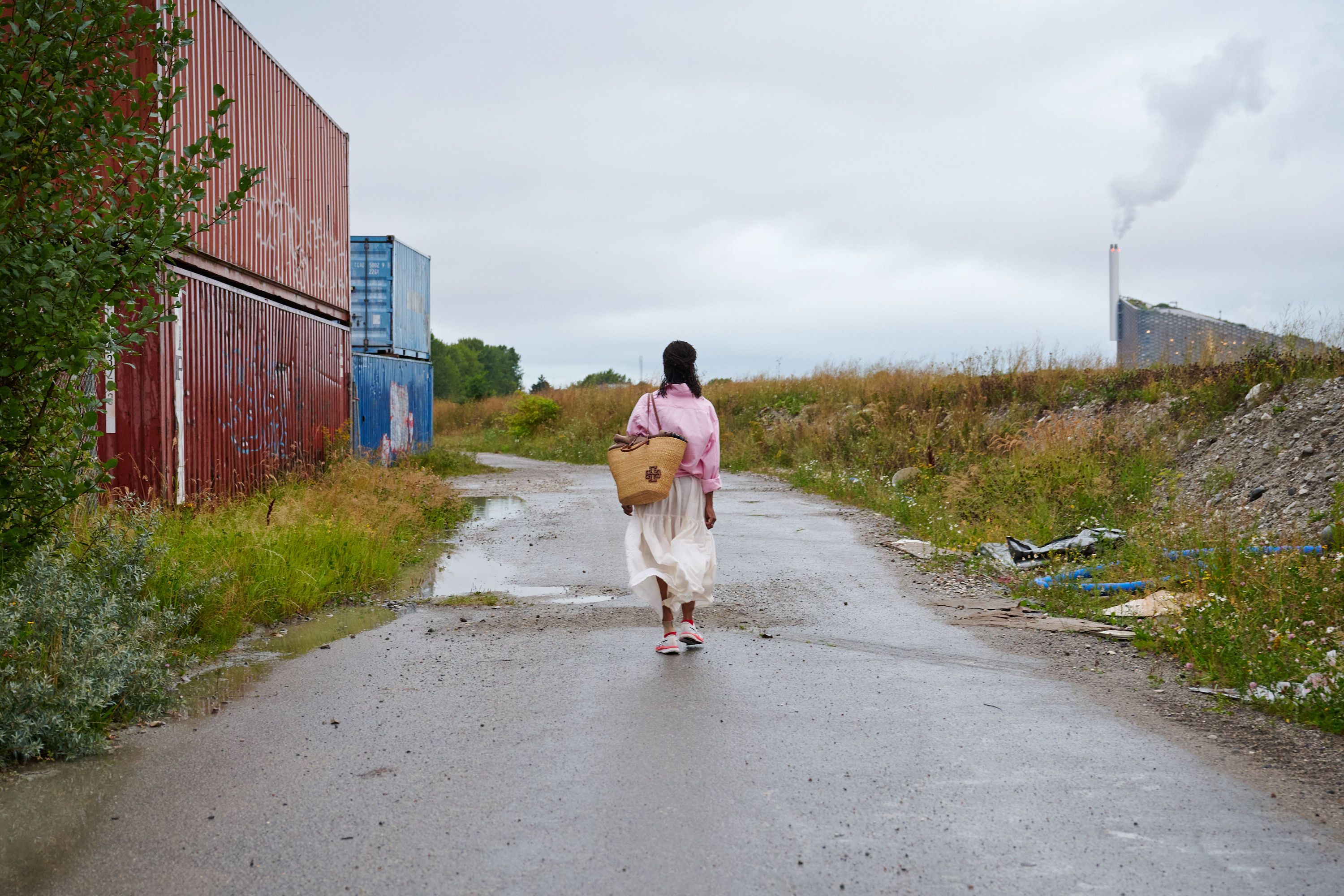
The Walking City is a four-hour performative walk created by IN SITU associate artists DOM-/Leonardo Delogu & Valerio Sirna. The Walking City was presented in Copenhagen in august and september 2024 as part of IN SITU partner Metropolis’ summer season.
DOM- was founded in 2013. They explore performance art in a broader perspective and aim to challenge the dominant power structures and trends that have brought humanity and the planet to this ‘tipping point’. With inspiration from movements within eco-feminisms, queer ecologies, and art workers, they investigate the relationships between human bodies and landscapes, focusing on how power structures, nature, and marginalization interact in public space.
Niels Bonde Jensen is the communication coordinator for Metropolis. He holds an MA in film- and media studies from University of Copenhagen and has a background in culture journalism with articles published in different Danish magazines and journals. Since 2021 he has been a recurring writer for Metropolis’ blog where this piece is originally published in Danish.
*
*Echoes of the sea through Copenhagen*
Ocean view through a window in the West India Warehouse: The Inner Harbor is framed by the Maersk headquarters on the left and the war ship Peder Skram on the right. Here, thoughts of the sea as a trade route and war zone are opened, its historical potentials for expansion, domination, construction, destruction. In the space between, on the sea now, the yellow harbor buses sail, ferrying tourists from Refshaleøen to Nyhavn and back. The sea is also the domain of the experience economy, the domain of exploration, of adventure. Yes, Odysseus set out on the sea, and later, Columbus. Without their gazes toward new horizontal horizons, asks a voice in the room, would we ever have turned towards the stars – looking for new horizons vertically? Would we have landed on the moon? The sea is essential for the linear narrative tradition in the Western world, we understand, for our linear self-narrative.
In the room where we stand, it is explained, the slave trade between the Danish colony on the Gold Coast and the Danish West Indies was planned and initiated with great merchant hood – from point A to point B. The loss of human lives on the journey was part of the cost-benefit analyses of the time, cargo overboard. Ships have also carried the casts that are stored in the building’s collection, connecting Denmark with the art of the great civilizations of the Mediterranean. Complexity is at the heart of this linear art history, it is summarized. The statues' faces that express both pleasure and suffering.
It almost goes without saying that it is hard to tell anything essential about Copenhagen without this circling around the harbor and the sea. So that is what we do—a silent group of about 20—over the next four hours of walking through the city.
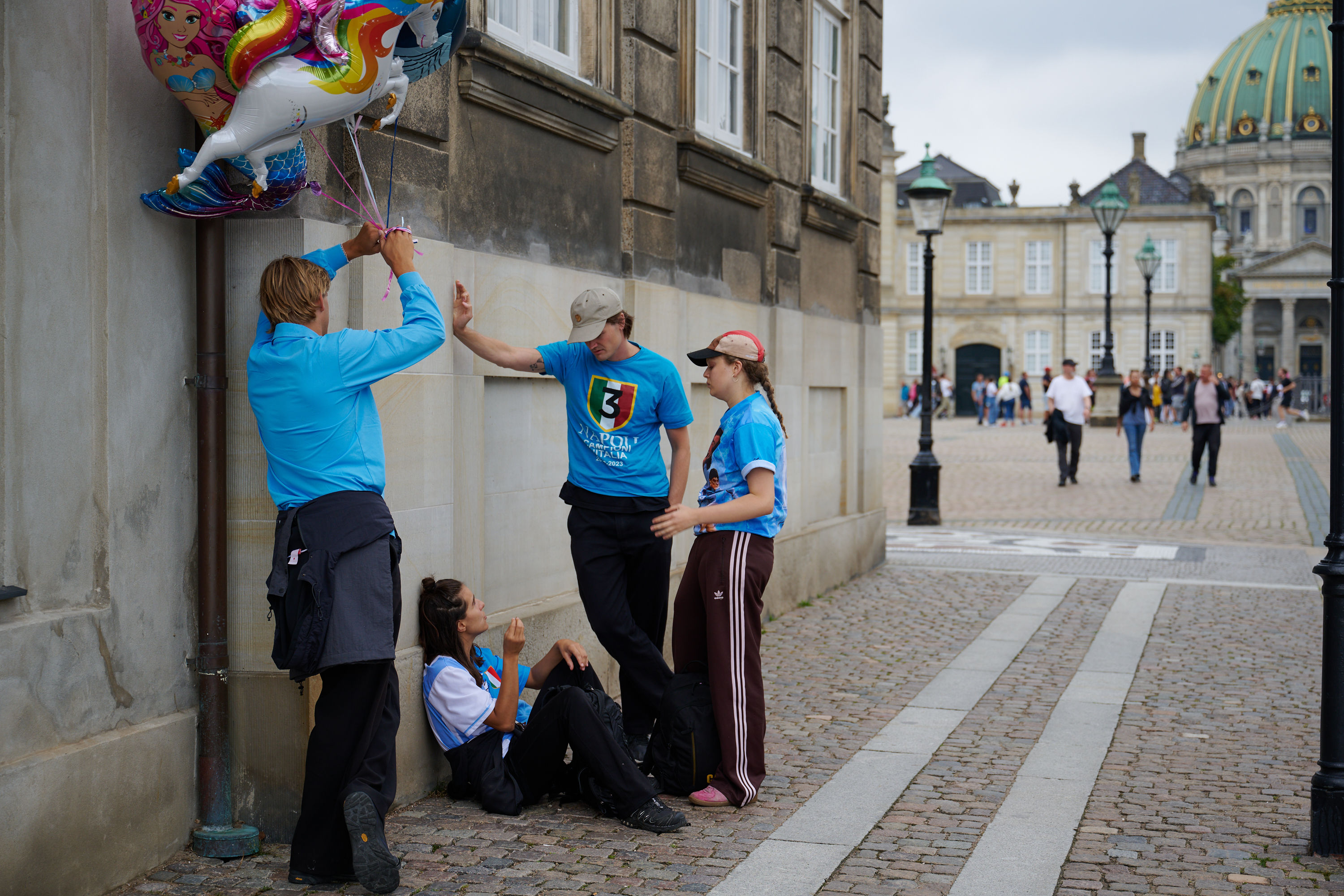 © Marine Gastineau
© Marine GastineauWe embark on our own odyssey in the word’s everyday use; a long journey from one point to another. But it is also an odyssey in the classical sense, with specific rhythms, themes, developments, resistance, complexity, paradoxes. All facilitated by a series of protagonists who walk quietly and guide us along the route. One protagonist appears with her back to us—walking into the waves. A mythical siren calling us out into the roaring, foaming chaos? Or an embodiment of today’s apathetic escape from the urban backdrop and all the new construction behind us? Longing for physical contact with nature.
Another guide sings as we move together through newly built oases of glass and lawns, where families grill and walk their dogs. We might resemble a funeral procession as we walk there through people's daily lives. A dirge for the dying old Copenhagen? A hymn to the new city and the one that is always underway?
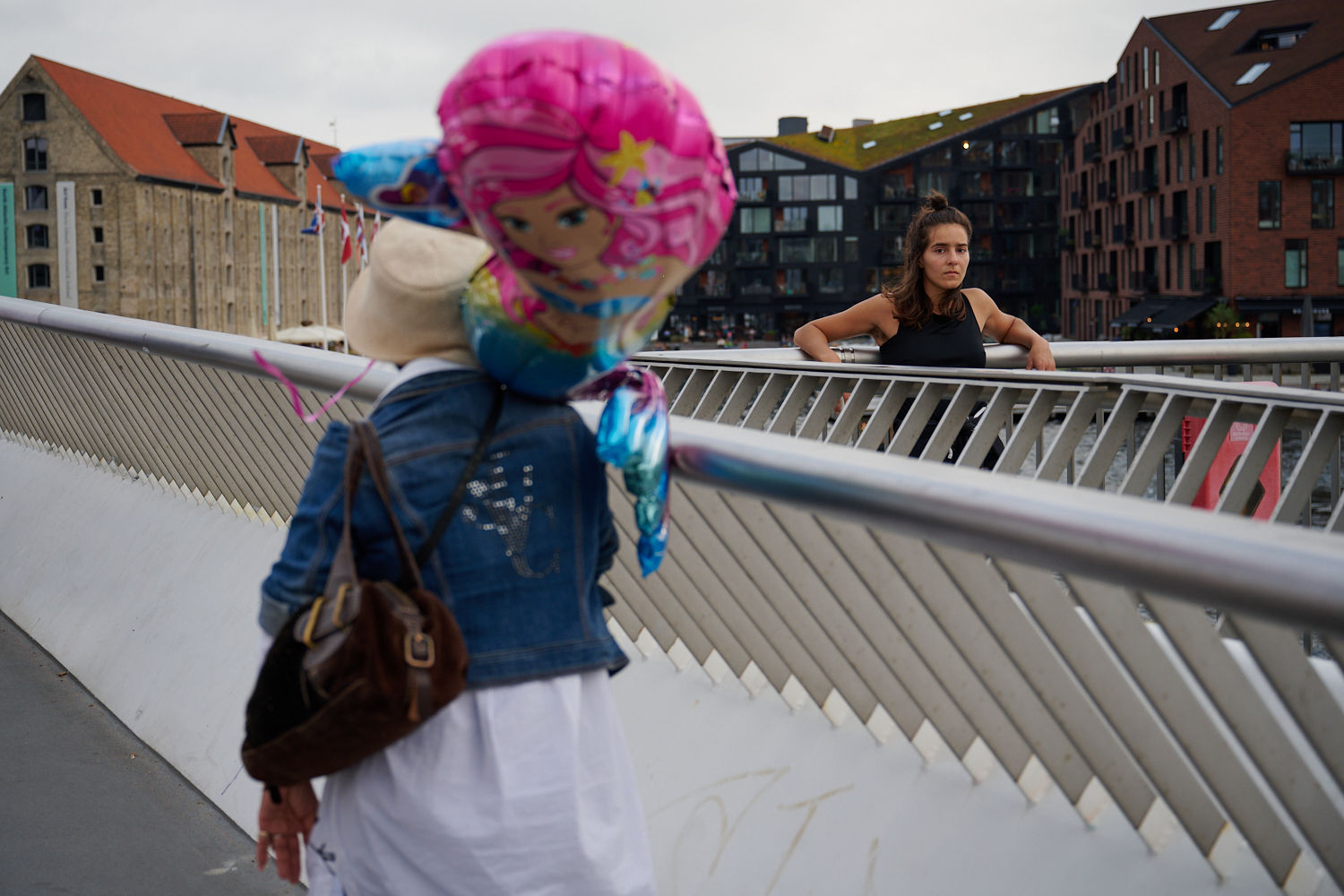
Along the way, we are surrounded by echoes of the city's life. Music and recited texts from amplified sources that are hard to locate are thrown back and forth between house walls, painting urban spaces in shades of poetry, melancholy, joy, longing. Bodily echoes also haunt. First, a group of young Italian tourists appear, noisily making their way through Nyhavn, only to reappear later as playful acrobats doing somersaults on a lawn in Amager. Several times, one doubts: who are the performers and who are the ”real” inhabitants of Copenhagen?
Are these echoes a heightened staging of the city or emphasized fragments of its authentic everyday life? Attention is sharpened, senses are open. The in-between spaces of Copenhagen are filled with a multitude of small scenes. One could argue that the city’s material, "dead" world—buildings, courtyards, infrastructure, power grids—always contains its own living dream world, its own magic mirror image. So, is The Walking City an animation, a proactive endowment? Perhaps rather an expansion of consciousness. A door you usually pass by without noticing, now opening ajar.
We also move into lower, more modest, and makeshift urban spaces: barracks, containers, construction sites, mountains of gravel. Here, Slavic languages are spoken over phones. Here, it’s a long way to the nearest café. These are places you either live in or move through, you don’t just stop by. The door is only ajar.
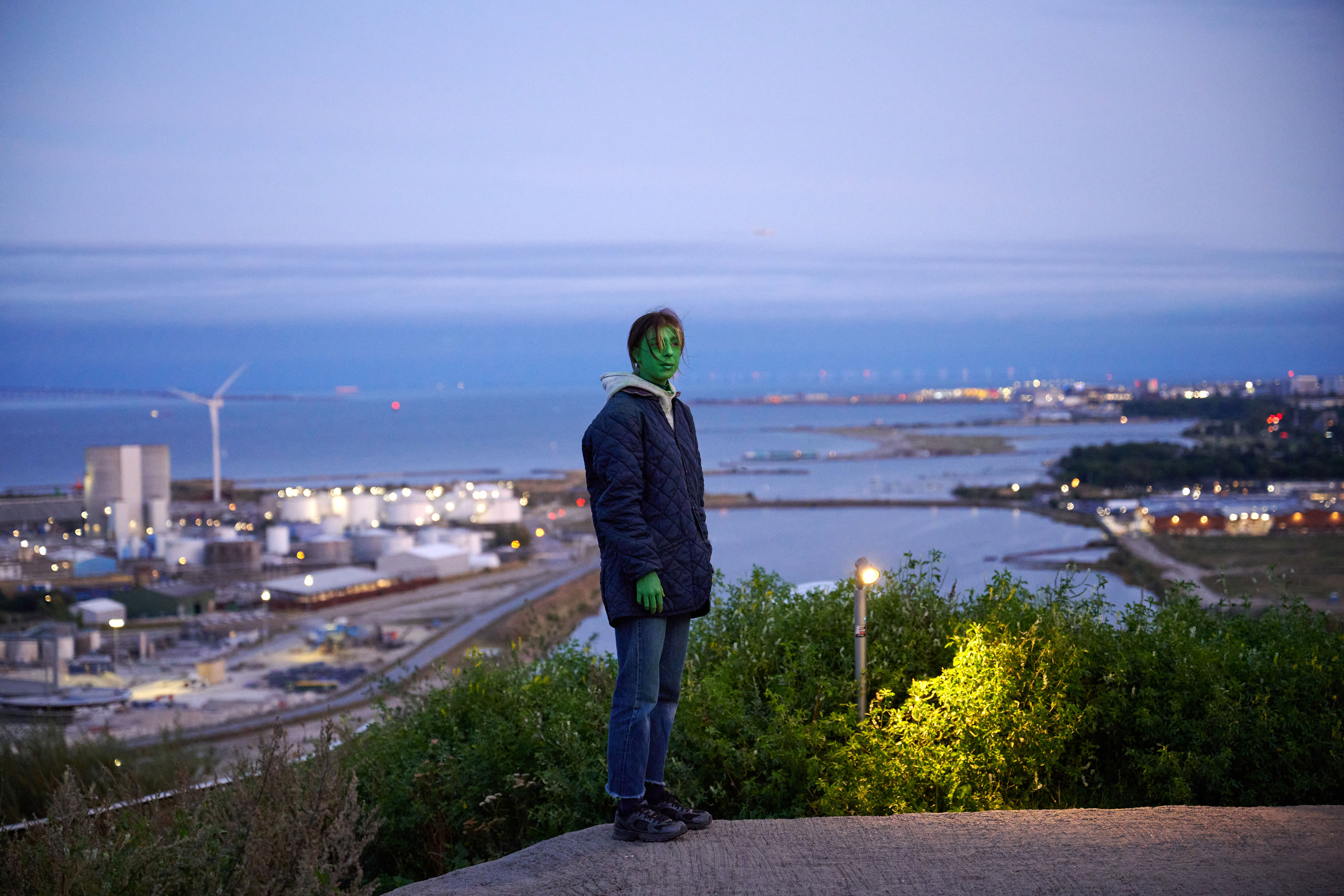
We end with our backs to the city, a view over Øresund. Large machines transporting cargo to and from ships, and machines working to expand the city by building dams in the sea. Here, yet another complexity is staged: Copenhagen is an ongoing taming of the sea, but the sea’s continued wildness also holds Copenhagen’s possibilities. For expansion, domination, construction, destruction. The Walking City leaves its complexities open to interpretation but unites us in an ocean view over Copenhagen's history, present, and possible futures. A siren call is sent out from the edge toward the city center, asking its inhabitants: Will you, dare you, venture out into deep water?

